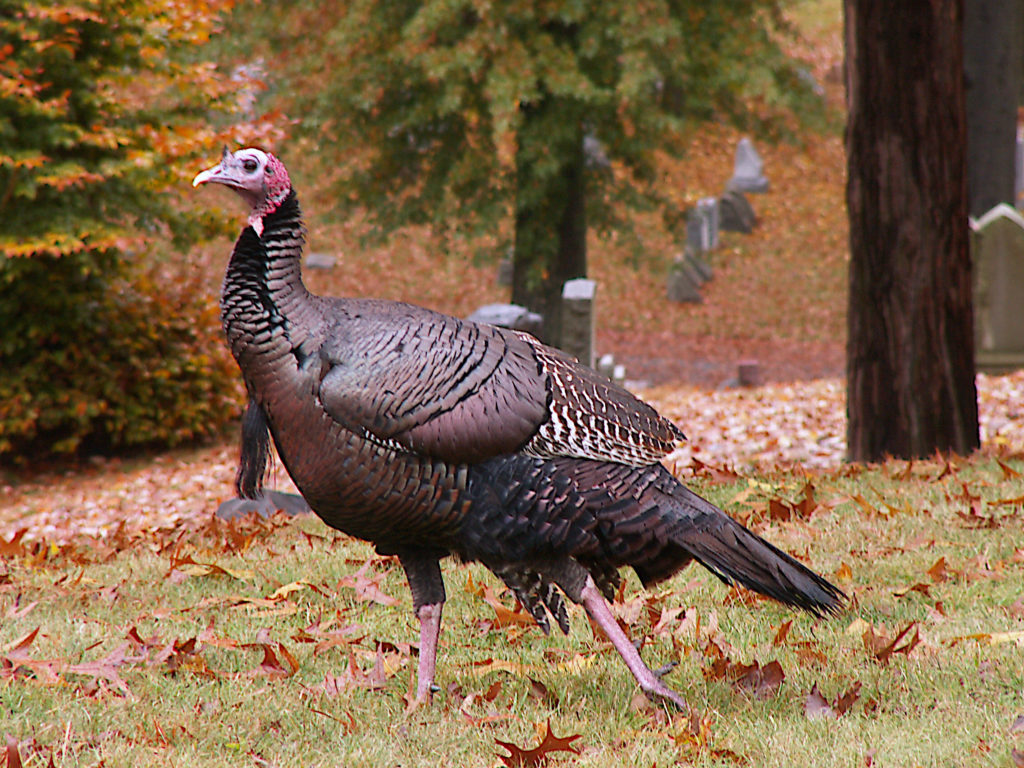
In Allegheny Cemetery.


Today we have the privilege of peeking into one of those fine Tudor houses in Schenley Farms, through the courtesy of the gracious owners. The architects of this one, built in 1907, were the twin Beezer Brothers, who gave us a number of fine houses and a few distinguished public buildings before moving out west to prosper even more. In Pittsburgh architectural history, they’re mentioned most often as the employers of John T. Comès when he designed the church of St. John the Baptist (now the Church Brew Works) in Lawrenceville, which shows that they had an eye for rare talent. This house shows that the brothers also had a keen eye for detail and meticulous craftsmanship.
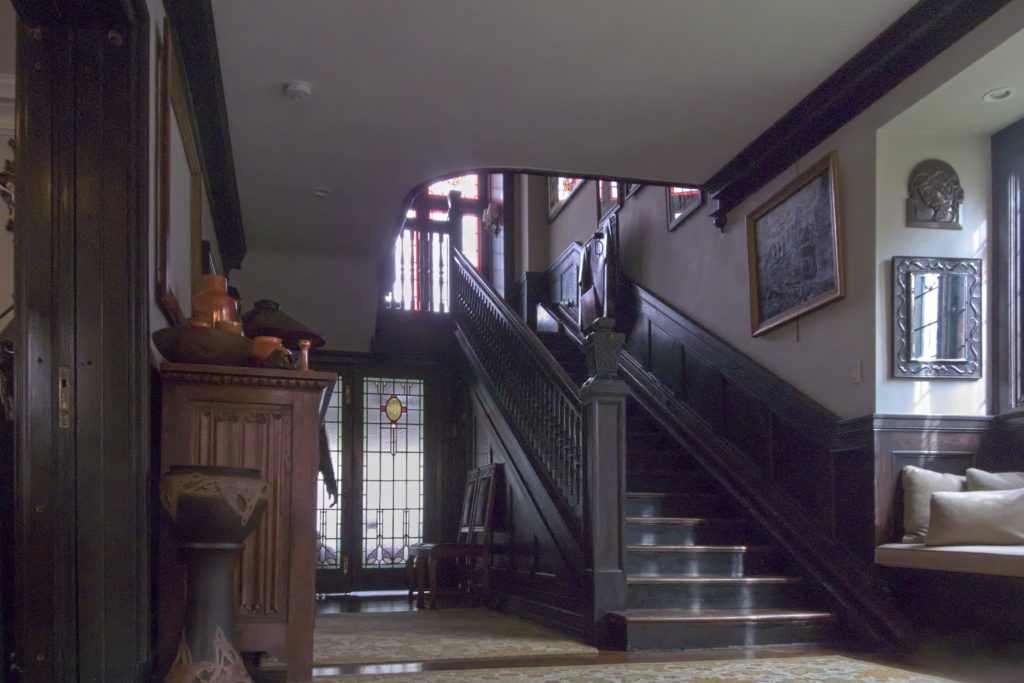
The entry is a good introduction to the house, with its dark woodwork and art glass everywhere. Tudor Revival architecture uses dark wood extensively; in the best Tudor Revival houses, it creates a sense of shelter from the inhospitable elements outside.
If you look closely toward the top of the staircase, you may notice one of the unusual additions to this house: a stair lift that is probably ninety years old or more.

The staircase leads up to a landing with a huge window in the best Tudor Revival style. Light pours in through the window, but the much-divided glass keeps the strong sense of being inside and comfortably protected.
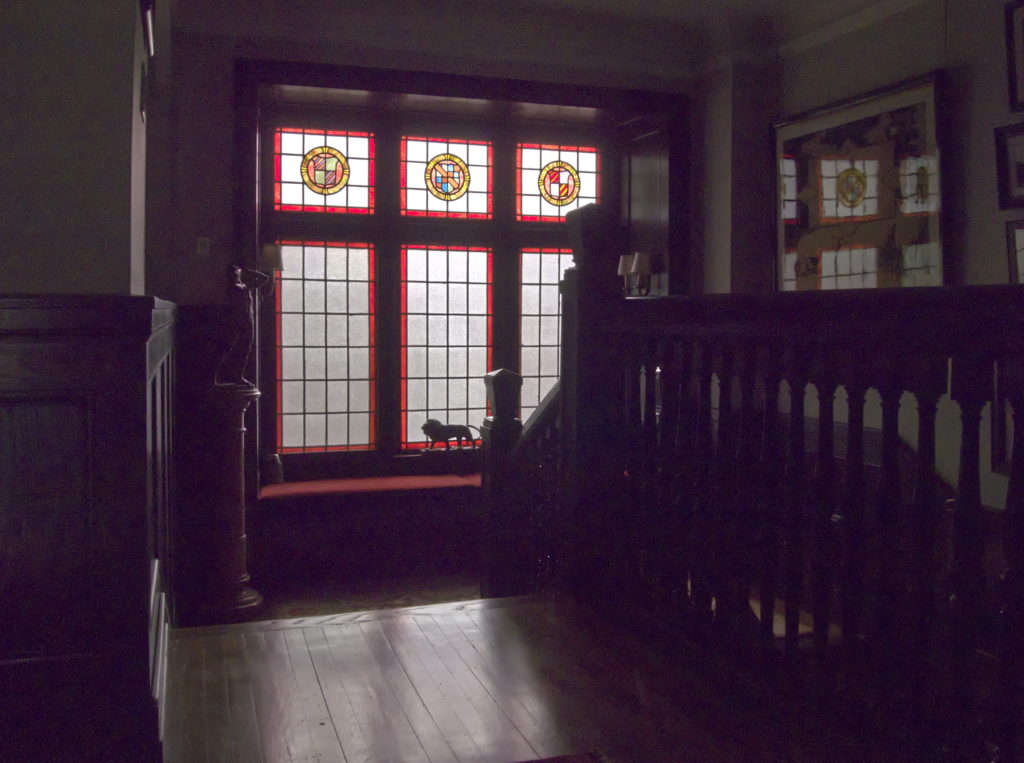
The escutcheons in glass suggest a family tradition of immemorial antiquity, which must be a comforting feeling if you are a former shop clerk who has just made his pile in sewer pipes or corsets.

The dining room is illuminated by windows that permit a view of the world outside (and the back yard next door), but filter it through artistic glass.
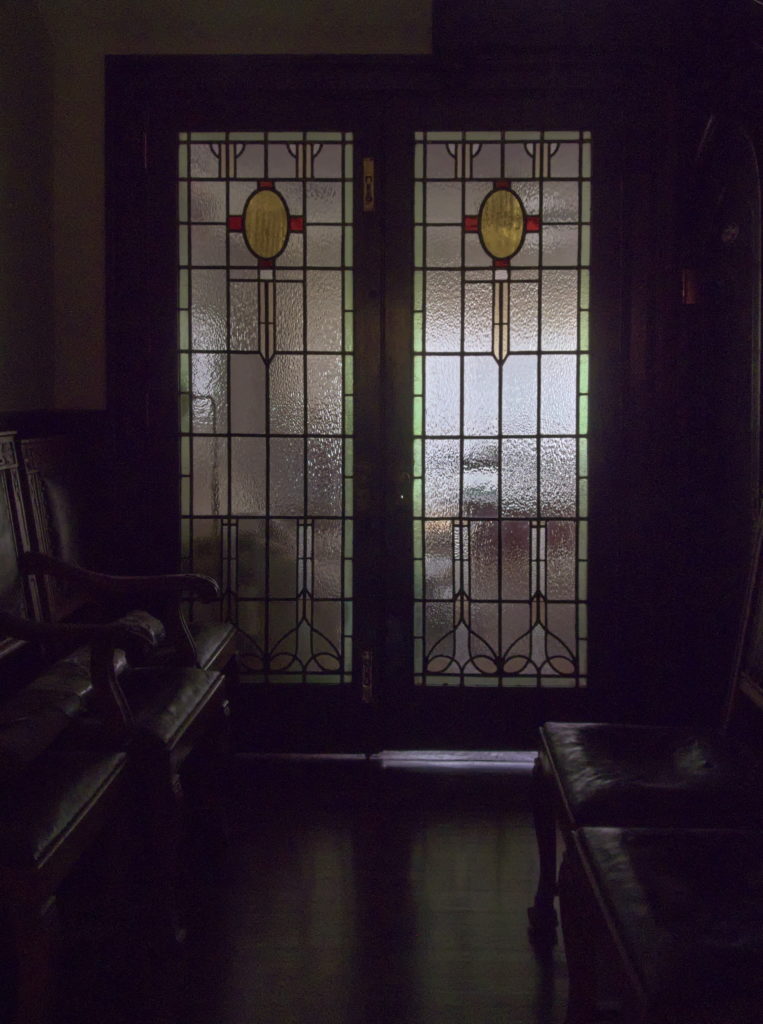
The entry is separated from the rooms behind by more glass.
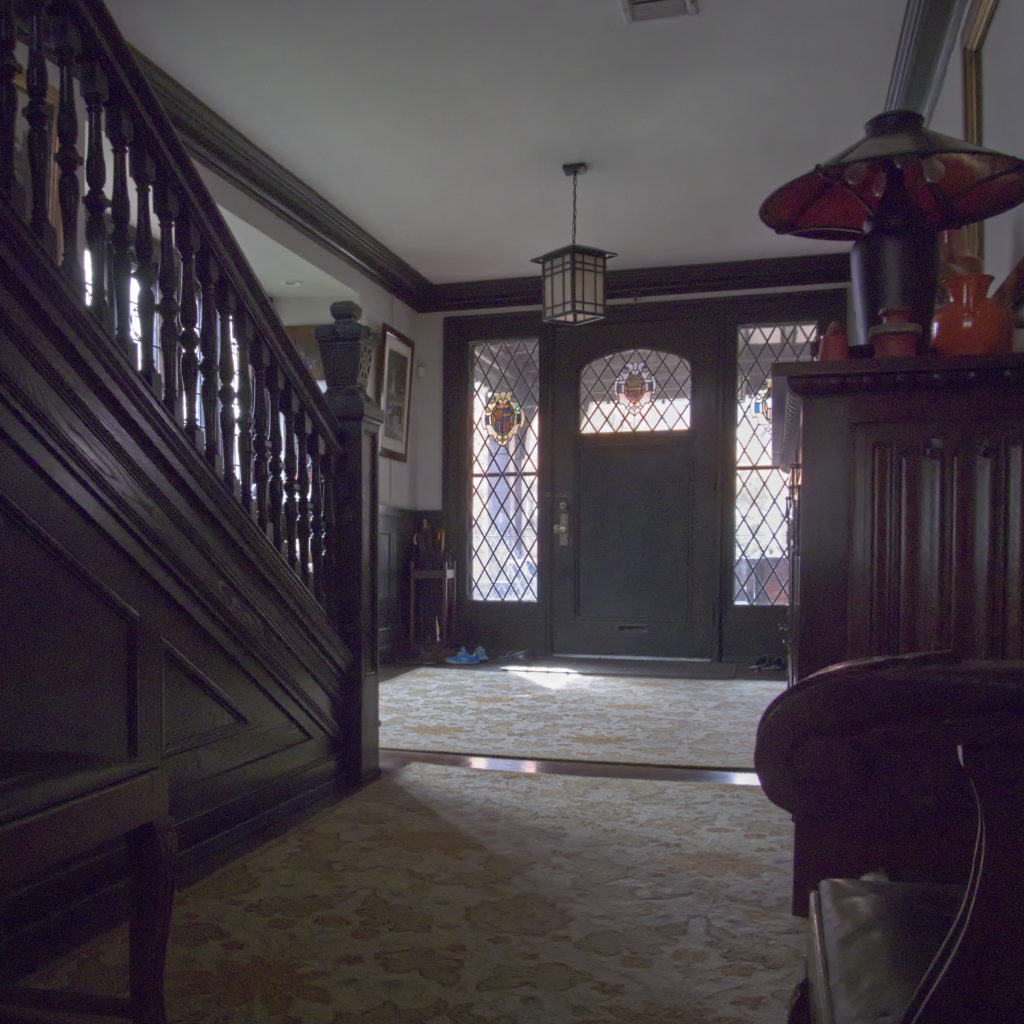
The front entrance is surrounded by glass, which lights up the entry without making it oppressively bright.

The front porch is covered by a roof whose exposed timbers give it a Tudor atmosphere while once again adding to the sense of shelter.

The windows of the front entrance, like several of the other windows in the house, permit a view of the outside world through artistically arranged glass. In effect they Tudorize the great world beyond the house, making it seem more inviting and less threatening. It is almost a disappointment to walk out and find no beruffed nobles on horseback or elegant court ladies waving handkerchiefs.
What houses like this gave their residents was a sense of permanence in a world that might otherwise seem to be running away from them. Living here, you were part of the best traditions of the old world, while enjoying all the comforts modern technology could provide you. The design created spaces that were distinct and sheltering, each adapted perfectly to its purpose, but harmonized into a whole that conveys a consistent impression of comfort and prosperity. The joy of a Tudor house by the Beezer Brothers, or any of the dozens of similarly accomplished architects who were working in Pittsburgh at the same time, is not the joy of seeing old forms burst apart and wonderful new shapes burbling out of the artist’s imagination. They are not free verse by Whitman; they are sonnets by Shakespeare or Spenser or Wordsworth or Millay, in which each artist uses the traditional form, but the pleasure is in how the form brings out the distinct personality of the artist.
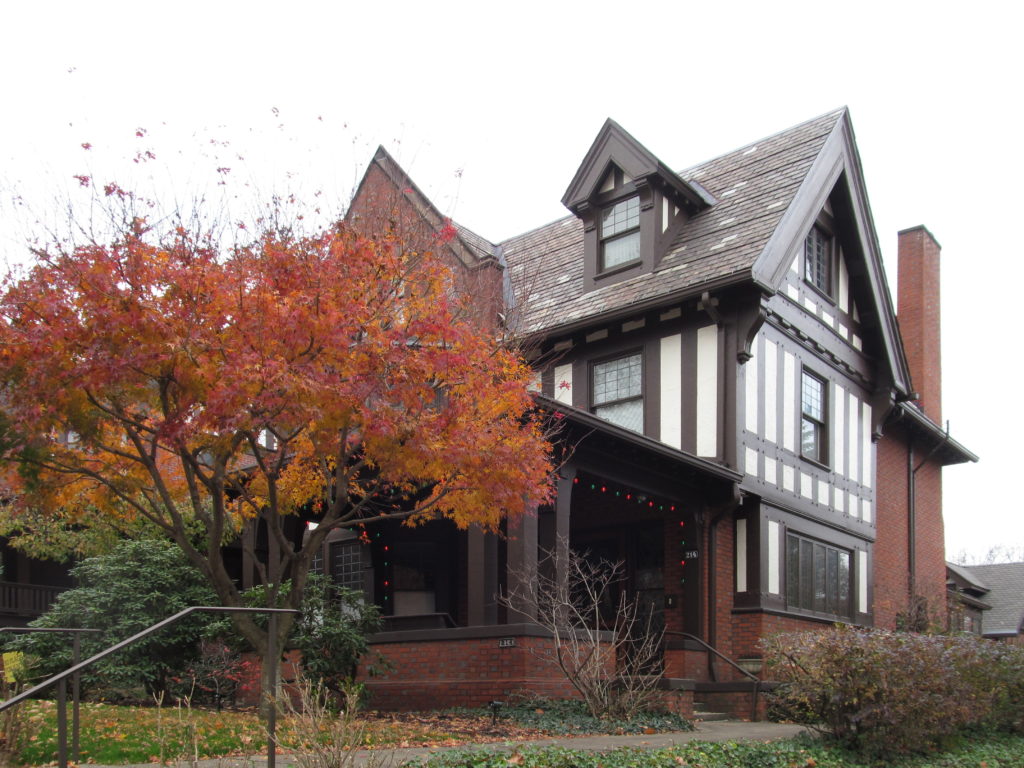

This pair of Italianate houses dates to the 1870s. Like many other houses around here, these have made some extreme adaptations to Pittsburgh topography. Some fake siding has been added on the dormers, and the porch has probably been rebuilt more than once, but the general aspect of these houses probably hasn’t changed much in a century and a half.

Father Pitt would like to introduce you to an architect you’ve never heard of, but one who merits your attention: John H. Phillips, who kept his office in McKees Rocks, and about whose personal life old Pa Pitt knows absolutely nothing.
When we speak of the early modernists in Pittsburgh—the architects before 1920 or so who adopted the idioms of Art Nouveau and related movements—we generally have a very short list: Frederick Scheibler, Kiehnel & Elliott, and the incomparable Titus de Bobula, the man who gave up his promising career as an architect because he would rather be a millionaire playboy Nazi dictator. Now Father Pitt proposes to add the name of John H. Phillips to that list. Here is the Ukrainian National Home, built in 1913 in a shockingly unconventional style.

We have to use our imagination to see the building with the colossal windows the architect designed to flood the building with light, because men’s clubs in Pittsburgh always block in their windows. But the outlines of the building are unaltered, and the ornamental brickwork is remarkable. Note in particular those squares above downward-pointing triangles at the entrance: they will reappear on other Phillips buildings, almost like a signature.

Where did this obscure architect get his Art Nouveau style? There could be any number of explanations, but Father Pitt suspects that Phillips took a lot of inspiration from Titus de Bobula. We will see some evidence for that speculation when we come to Phillips’ most prominent work in the McKees Rocks Bottoms, Holy Ghost Church. Meanwhile, this extraordinary building may serve as John H. Phillips’ initiation into the exclusive little club of early modernists in Pittsburgh.

The Oliver Building, designed by Daniel Burnham, was the tallest building in Pittsburgh when it was put up in 1910, passing Alden & Harlow’s Farmer’s Bank Building (destroyed in 1997, or arguably thirty years earlier when it was given a fake-modern skin). Only two years later, though, it was passed by Daniel Burnham’s own First National Bank Building (destroyed in 1968 to make way for a modernist skyscraper barely any taller).
The front of the Oliver Building still produces an impression of absolute massiveness, spanning an entire block with a 348-foot-tall wall. The rear, on the other hand, is where the light wells are, which divide the building into three narrower towers, changing the impression to one of loftiness rather than massiveness.
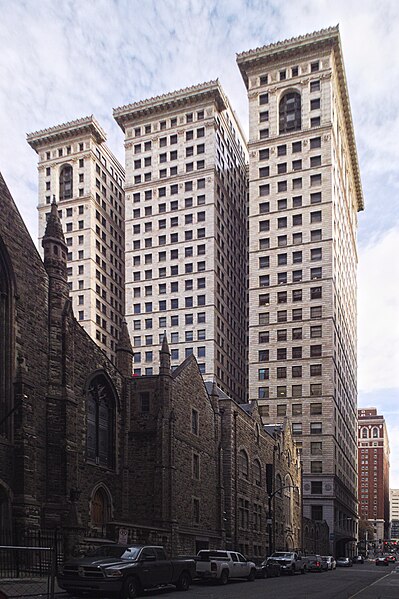
Your eyes are not being fooled by a trick of perspective: the section on the right really does extend a little further toward us than the other two.